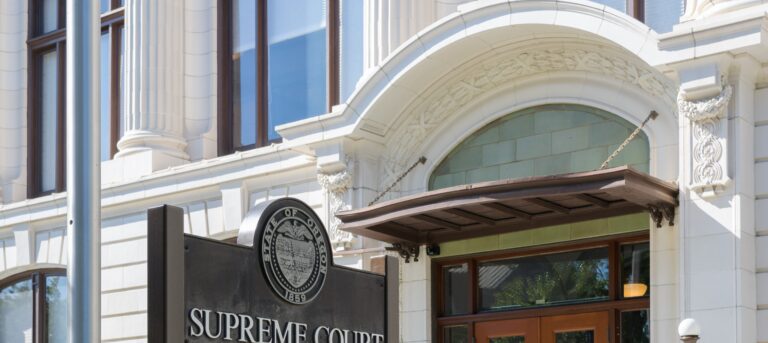Washington Case Law Update: Speculation Does Not Create Issue of Material Fact
Washington Case Law Update: Speculation Does Not Create Issue of Material Fact
From the desk of Kyle Riley: In order to establish negligence, the plaintiff must prove that the alleged negligent act or omission caused his or her damages. But where the evidence shows only that the allegedly negligent act or omission may have caused the plaintiff’s damages, has the plaintiff established causation? Read on to learn more.
Claims Pointer: In this case arising out of a car accident, the Court of Appeals held that summary judgment was appropriate where the evidence did not conclusively establish causation. The case provides insight on how courts analyze the element of causation in negligence claims, an important consideration for insurers and attorneys defending negligence claims.
Kane v. City of Seattle, No. 74638-3-I, Washington Court of Appeals, Div. I (March 27, 2017) (unpublished)
Around 11:30 pm on a July night in 2014, Mitchell Kane (“Kane”) was driving his moped in the Green Lake neighborhood of Seattle when he was struck by a car. He sustained a broken leg and pelvis and injuries to his head and chest. Jonathan Hilton (“Hilton”), the driver of the car that struck Kane, told police that he failed to stop at a stop sign before proceeding into the intersection. Hilton had a Breathalyzer reading of .116, and he later pleaded guilty to vehicular assault.
Bethany Community Church (“Bethany”) is located at the intersection where the accident occurred, and it also owns a crabapple tree located on one of the intersecting streets. Photographs showed that the branches of the tree obscured the stop sign facing Hilton at various points on his approach to the intersection.
Kane sued Bethany, along with Hilton and the City of Seattle (“Seattle”), alleging that Bethany breached a duty to maintain the tree so that the branches did not interfere with the ability of drivers using the street to see the stop sign. Kane claimed that his damages were a direct and proximate result of Bethany’s negligence.
During discovery, Seattle asked Hilton in an interrogatory to describe any facts or circumstances he believed contributed to cause the accident. Hilton responded that he did not see the stop sign until he got to it, and that he remembered seeing trees there but did not recall whether they obscured his vision. During a deposition, Hilton explained that his passenger pointed out the stop sign, which he had not seen as he approached the intersection. In a later deposition, Hilton testified that the stop sign was visible after he got closer to it, that he did not know why he missed the stop sign, and that he could not testify with any certainty that there were branches obstructing the stop sign. Kane also submitted expert testimony that the sign was not visible from the distance at which Hilton would have needed to brake to avoid the collision, and that that an emergency stop was necessary to stop within sight distance.
Bethany moved for summary judgment, arguing in part that Kane lacked proof that its alleged negligence in failing to maintain the tree caused the accident and that the sole proximate cause of the accident was Hilton’s failure to abide by the rules of the road. The court agreed and granted the motion based on Hilton’s testimony that he did not know if the trees obstructed his vision and he had no clear memory that they did. Kane appealed.
In a negligence claim, the plaintiff must prove causation by establishing that he would not have suffered harm but for the defendant’s alleged negligent conduct. While causation is usually a question of fact for the jury, summary judgment is proper if the facts and inferences from the facts are plain and not subject to reasonable doubt.
Kane argued on appeal that the evidence established that the obscuring branches caused the accident. However, the Court of Appeals did not agree, finding that the evidence in the record was not proof that the reason Hilton failed to stop was that he could not see the stop sign. The court noted that Hilton repeatedly testified that he did not know why he did not stop. For the court, to say that the tree would have obscured the stop sign at the vantage point shown in a photograph was not consistent with and did not overcome Hilton’s unequivocal testimony that he did not know why he failed to stop. As the court explained, while Hilton may have noticed the stop sign earlier if the branches had been properly trimmed, and he may have then stopped before he got to the intersection, speculation does not create an issue of material fact. Even assuming Bethany was negligent for failing to trim the tree, the only known facts were that an intoxicated driver failed to stop at an intersection where the tree branches made it difficult to see the stop sign. Whether the diminished visibility of the stop sign was a contributing cause of Hilton’s failure to stop remained unknown. Accordingly, Kane’s negligence claim failed because the evidence did not establish that Bethany’s alleged breach of its duty to maintain the branches of its tree caused Kane’s damages. Summary judgment was therefore appropriate, and the trial court was affirmed.
NOTE: This opinion has not been published. It is provided to demonstrate how the court approaches the issues involved in the case. It cannot be cited as authority to a court of law.
View full opinion at: https://www.courts.wa.gov/opinions/pdf/744585.pdf
Case updates are intended to inform our clients and others about legal matters of current interest. They are not intended as legal advice. Readers should not act upon the information contained in this article without seeking professional counsel.
To email Kyle Riley, please click here.
To view the most recent Oregon Case Law Update:Contextually Ambiguous Liability Waiver Does Not Limit Tort Liability, please click here.

















